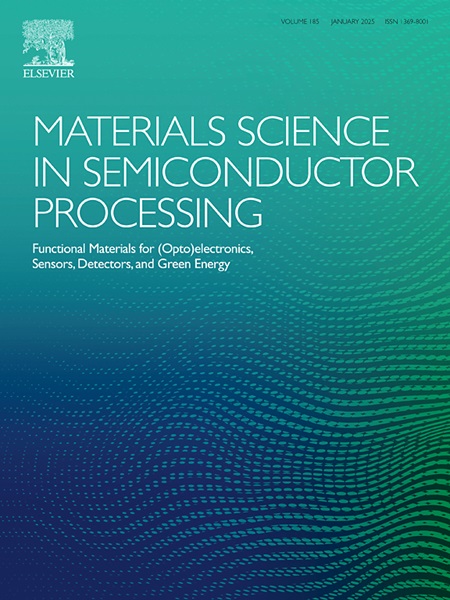碳量子点应用的进展:催化、传感和生物医学创新
IF 4.2
3区 工程技术
Q2 ENGINEERING, ELECTRICAL & ELECTRONIC
引用次数: 0
摘要
碳量子点(CQDs)是一组有趣的纳米材料,以其独特的视觉效果、高度的生物相容性和广泛的表面功能而闻名。本综述讨论了在制造 CQDs、表征 CQDs 以及以不同方式使用 CQDs 方面取得的最新进展。合成策略的创新加强了对尺寸、表面结构和光致发光特性的控制,从而为特定应用实现了量身定制的功能。生物成像和生物传感领域的重要发展证明了 CQDs 在高分辨率、无毒成像和生物分子灵敏检测方面的潜力。由于 CQDs 具有很大的表面积,而且可以改变其表面化学性质,因此在环境科学中,CQDs 在寻找和去除污染物方面大有可为。此外,将 CQDs 添加到太阳能电池和超级电容器等储存和改变能量的设备中,也使它们变得更加稳定和高效。本综述还探讨了 CQDs 在药物输送、光催化和光电子学方面的新兴应用,强调了 CQDs 在应对当前技术挑战方面的巨大潜力。本文提出了未来的研究方向,以克服当前的局限性,扩大胶体 QDs 在各种应用中的应用范围。本文章由计算机程序翻译,如有差异,请以英文原文为准。
Advances in carbon quantum dot applications:Catalysis, sensing, and biomedical innovations
Carbon Quantum Dots (CQDs) are an interesting group of nanomaterials known for their unique visual qualities, high biocompatibility, and wide range of surface functions. This review discusses the latest progress made in making CQDs, characterizing them, and using them differently. Innovations in synthetic strategies have led to enhanced control over size, surface structure, and photoluminescence properties, enabling tailored functionalities for specific applications. Key developments in bioimaging and biosensing demonstrate CQDs' potential for high-resolution, non-toxic imaging and sensitive detection of biomolecules. Because they have a lot of surface area and can change their surface chemistry, CQDs have shown promise in environmental science for finding and getting rid of pollutants. In addition, adding them to devices that store and change energy, like solar cells and supercapacitors, has made them more stable and efficient. This review also explores emerging applications in drug delivery, photocatalysis, and optoelectronics, underscoring the vast potential of CQDs in addressing current technological challenges. Future research directions are proposed to overcome the current limitations and expand the application scope of colloidal QDs in various applications.
求助全文
通过发布文献求助,成功后即可免费获取论文全文。
去求助
来源期刊

Materials Science in Semiconductor Processing
工程技术-材料科学:综合
CiteScore
8.00
自引率
4.90%
发文量
780
审稿时长
42 days
期刊介绍:
Materials Science in Semiconductor Processing provides a unique forum for the discussion of novel processing, applications and theoretical studies of functional materials and devices for (opto)electronics, sensors, detectors, biotechnology and green energy.
Each issue will aim to provide a snapshot of current insights, new achievements, breakthroughs and future trends in such diverse fields as microelectronics, energy conversion and storage, communications, biotechnology, (photo)catalysis, nano- and thin-film technology, hybrid and composite materials, chemical processing, vapor-phase deposition, device fabrication, and modelling, which are the backbone of advanced semiconductor processing and applications.
Coverage will include: advanced lithography for submicron devices; etching and related topics; ion implantation; damage evolution and related issues; plasma and thermal CVD; rapid thermal processing; advanced metallization and interconnect schemes; thin dielectric layers, oxidation; sol-gel processing; chemical bath and (electro)chemical deposition; compound semiconductor processing; new non-oxide materials and their applications; (macro)molecular and hybrid materials; molecular dynamics, ab-initio methods, Monte Carlo, etc.; new materials and processes for discrete and integrated circuits; magnetic materials and spintronics; heterostructures and quantum devices; engineering of the electrical and optical properties of semiconductors; crystal growth mechanisms; reliability, defect density, intrinsic impurities and defects.
 求助内容:
求助内容: 应助结果提醒方式:
应助结果提醒方式:


